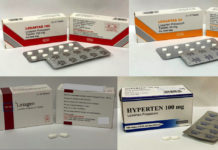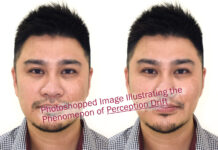
This article was first published on 23 Mar 2019, and updated on11 Oct 2022.
Recently, a tragic and unexpected incident occurred when a young lady allegedly underwent a Botulinum Toxin (BoNT) treatment in a clinic in Singapore, and passed away after spending 5 days in a coma. Since then, almost every patient I see has voiced concerns about undergoing Botox and other cosmetic treatments. Most are worried about the side effects, and whether Botox can result in death.
Before providing the answer to the above question, it is important to first understand what exactly Botox is and how it works.
What is Botox?
Botulinum toxin, often referred to as Botox, is a neurotoxic protein produced by Clostridium Botulinum, a bacteria.
There are eight known types of BoNT, named type A-H. Types A and B are used in medicine to treat various muscle spasms and diseases characterized by overactive muscle activity.
The 3 FDA approved commercial brands of BoNT for cosmetics treatments are marketed under brand names Botox, Dysport, and Xeomin. There are some similarities and differences amongst the 3, which I previously wrote about.
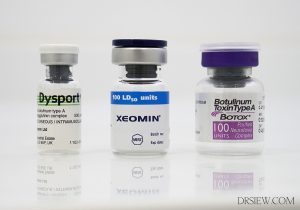
Botox is the most common cosmetic procedure performed worldwide, with an estimate of nearly 3 million injections per year. It has been used to treat dynamic wrinkles for almost 30 years.
Is Botox dangerous?
Paracelsus, a Swiss physician and a pioneer of ‘medical revolution’ once said, “All things are poisons and there is nothing that is harmless, the dose alone decides that something is no poison.”
Botox, just like any medication, has risks and benefits. Although BoNT is a neurotoxin which paralyses muscles, and even cause death, the therapeutic doses used are much lower than the fatal doses. For this reason, Botox is very safe as long as it is administered by a medical doctor. A proper consult and examination by your doctor is required before the treatment, so that he or she can determine the dosage, frequency of treatment, and whether Botox is a suitable treatment to treat the aesthetic concerns you are facing.
What Happens to your Body When You Receive a Botox Treatment?
BoNT comes in a vacuum-dried (Botox), freeze-dried (Dysport) or powder (Xeomin) preparation. It is reconstituted and diluted with saline before it is being injected. Proper dilution with saline ensures that the BoNT is available in a concentration which will give you the best results, safely.
After being injected into the target area, botulinum toxin works by inhibiting the release of a neurotransmitter, acetylcholine, by the nerve cells. This prevents the nerve signals from being released by the cells, and hence, neuromuscular blockage. The treated muscles can no longer contract as strongly, which causes the wrinkles to relax and soften, and also prevent new ones from forming.
The Botox remains localized in the area of injection and does not spread all over the body. Although the effects of a Botox treatment lasts for 3-6 months, the protein does not remain in the body for such a long time. The half life of BoNT is about 230 – 260 minutes.
What Can Happen When Botox Treatments Go Wrong?
While Botox is very safe, it is still a medical treatment with possible side effects, most which are mild and temporary. Before undergoing a Botox treatment, a responsible doctor should explain the benefits and potential side effects to you.
Most of the side effects of Botox are mild and injection-related, such as redness, swelling, soreness and bruising at the site of injection. Some other side effects are related to over treatment – such as drooping eyelids, or the dreaded “frozen” look when too much Botox is injected.
Once common and often distressing side effect of Botox is eyelid ptosis. This can occur if the Botox diffuses into the eyelid muscles. This has been reported to occur in 1-3% of cases, but can be minimized with proper techniques.
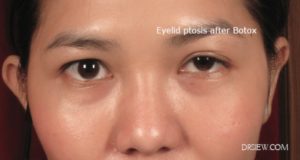
Serious adverse effects occur when the Botox spreads other parts of the body, or when they affect muscles of breathing and swallowing. Affected patients may exhibit “botulism-like symptoms” such as muscle weakness, difficulty in breathing, speaking or swallowing, vision problems, and bladder control issues. This is extremely rare, but has been reported. These occur when large doses of Botox are required, such as in the treatment of upper limb spasticity – They do not usually occur in cosmetic treatments.
To put things into perspective, the lethal dose for a 70kg person is calculated to be 2500 to 3000 units. This is equivalent 25 to 30 bottles of Botox, and only if it is injected into the bloodstream. Hence, death by overdose is virtually impossible in a cosmetic setting as we usually use about half a bottle of BoNT (or less) during a treatment.
What Happened With The Botox Deaths?
There was a case of death in Hong Kong in November 2018 after a woman allegedly received Botox treatment. However, the autopsy was inconclusive, and the doctor was subsequently arrested for possession of dangerous drugs. Hence, we do not know for sure what occurred, what caused her death, or even if Botox was injected in the first place.
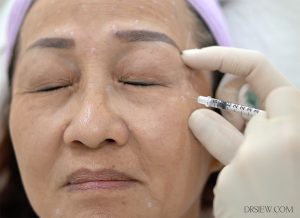
Similarly, in the recent tragic case in Singapore, we do not know if the patient had other medical conditions which caused her demise, nor do we know the circumstances of her collapse after the alleged Botox treatment. For now, we will have to wait for the official report from the coroner, before we will know what happened.
In the meantime, I urge everyone not to worry about getting your Botox injections done. The treatment is extremely safe, with 30 years of scientific data to back it up. The most important thing is to find a doctor you are comfortable with, and have a thorough conversation with him or her to understand the pros and cons of the treatment, before deciding if it is suitable for you.
Latest Updates on Case
Earlier today, its was revealed in The Straits Times that Ms Lau Li Ting was administered intravenous ethylenediaminetetraacetic acid (EDTA) in the clinic in 2019. Contrary to what was initially reported, Ms Lau did not receive “botox” but rather, an unapproved treatment which led to her tragic demise.
EDTA is a common ingredient in skincare and cosmetic products. It acts as a chelator or binding agent that suppresses chemical activity. Chelation therapy, where EDTA is administered intravenously, is not a treatment which is performed in aesthetic medicine. It is used to treat heavy metal toxicity. Sadly, some doctors advocate chelation therapy to healthy people as a form of anti-aging therapy. This is not scientifically proven, and dangerous. Deaths from chelation therapy on healthy people have occured in the past, and should never be performed.
In fact, any form intravenous infusions therapy for aesthetic purposes have been banned in Singapore. The U.S. FDA also release a statement that Glutathione Skin Whitening Injections could Kill, and hence should not be offered as a form of therapy.
The tragic loss of life here demonstrates fully the importance of performing only scientifically proven and safe treatments for our patients.





